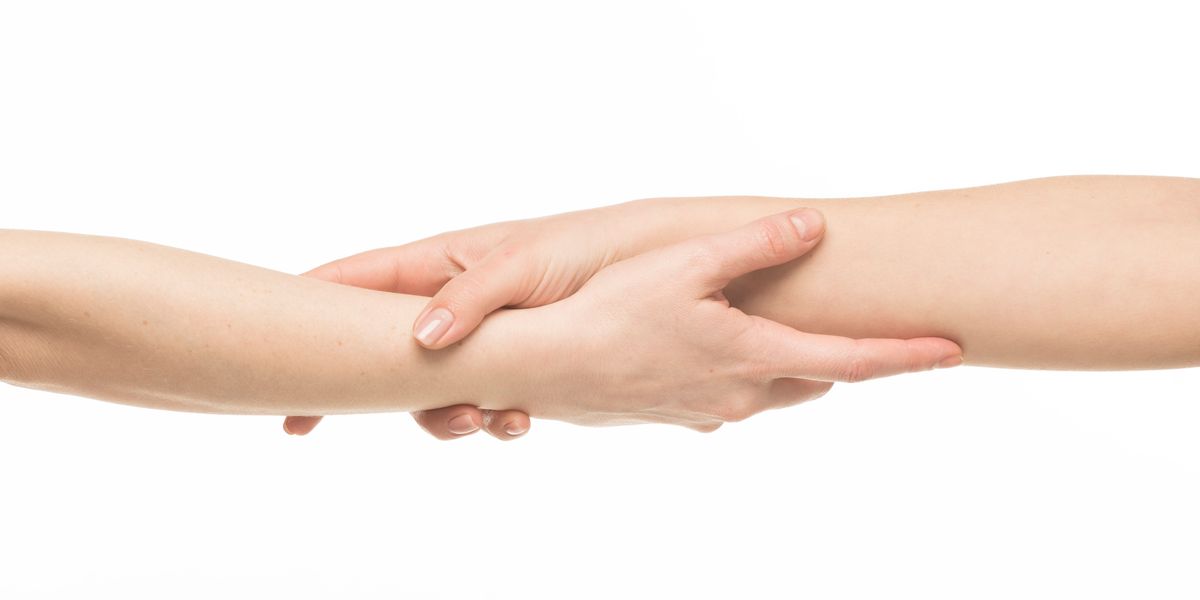Is It Time to Rethink How We Use Touch in the Studio?
From our creative movement classes to our final bow, dancers’ bodies are handled countless times by teachers, choreographers and other dancers. Because physical contact is so omnipresent in dance, it has traditionally been assumed that when you enter the studio you have agreed to be touched. But we live in a changing time when consent is getting the credence it deserves, largely because of the #MeToo movement’s exposure of abuse both inside and outside of dance. And since the dance world has temporarily gone virtual due to the coronavirus pandemic, many artists and teachers are being forced to rethink the role of touch in their practice.
Most professions that use touch—such as massage therapy and acupuncture—are highly regulated. But in dance, many people find themselves in teaching or leadership roles with little or no training on the issue. While touch is an indisputably valuable tool, it should not overshadow the autonomy of the human beings in the room.
Why Touch Is So “Touchy”
According to psychologist Jo-Anne La Flèche, who teaches psychopedagogy and dance psychology at L’École supérieure de ballet du Québec in Montreal, touch relates to our earliest stages of development in the mother’s womb. “We are never indifferent to touch,” she says. “It goes well beyond conscious communication. That is even more true in a situation like dance, where power has been given away to leadership.”
La Flèche cites recent research by Drs. Paula Thomson and Victoria Jaque that found the prevalence of post-traumatic stress disorder symptoms at a rate of 25 percent among dancers. We cannot ignore that one in four dancers is living with a history of trauma, says La Flèche, whether it was sustained in a dance setting or not. “We have to learn how to touch,” she says, “because if we don’t, we can do a lot of damage without even realizing it.”
Ongoing Consent
The assumption that a dancer is okay with being poked and prodded does not honor them as individuals with their own complex lived experiences.
“You have a right to your body,” says Frances Chiaverini, dancer and co-founder of Whistle While You Work, a platform that calls out harassment in dance. “As soon as you walk into the studio as a child, you are giving up that right to the authority figure in the room,” she says. “To learn that at a young age is dangerous because you don’t know how to create physical boundaries.”
La Flèche says that obtaining consent should begin at the beginning of a new season or semester, but should be confirmed each time. It’s as simple as saying “May I touch you?” (In yoga, sometimes students can communicate that they don’t consent with a visual cue, such as placing a sticker on their mat.) “To invite other people to say yes or no is giving them agency,” says Chiaverini.
Alternatives That Work
In 2018, the parents of a young dancer reached out to Miami City Ballet School instructor Francis Veyette to ask if he could coach their daughter over Skype. Shortly after, Veyette and his wife, MCB principal soloist Lauren Fadeley, started Veyette Virtual Ballet School—years before virtual learning would become the new norm due to the pandemic.
“We have to be very clear in our communication,” says Veyette. He uses imagery and exercises to help students retain concepts. For example, if Veyette wants a student to find their adductors, he will ask them to try to rotate their thigh bones forward without using their seat muscles. He says it takes longer to coach a student without touch, but the results have been surprising. “We find that we are not the first teachers to ask them to turn out, but it might be that we are the first teachers to tell them how to turn out,” he says.
These same methods can be implemented when students don’t consent to touch. La Flèche also suggests using objects or peers to achieve the desired correction: If a dancer is slouching in à la seconde port de bras, ask them to lie on the floor and feel all the places it touches their back. Or if both dancers are comfortable, use a peer dancer—which is far less emotionally loaded than a mentor—to place their hands on the upper back and help correct the student. “And then the student touching is receiving all kinds of information that is helpful to them as well,” she says. Non-consent doesn’t have to mean the end of a correction or idea. “This is a creative art form,” Chiaverini says. “There are a myriad of ways to find another option.”




